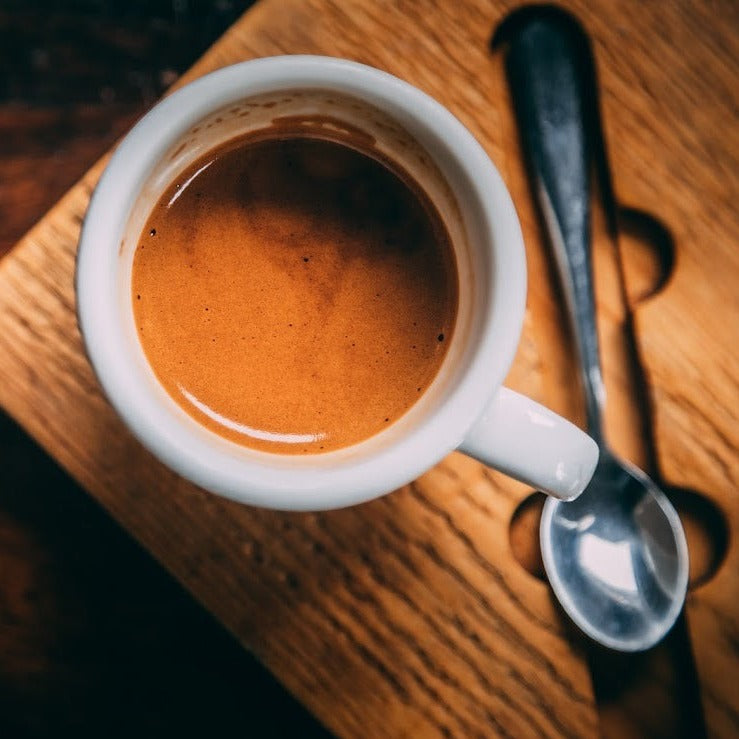Matching Food and Desserts with SOE Single Origin Espresso
Matching Food and Desserts with SOE Single Origin Espresso
Blog Article
Coffee Beans 101: Everything You Need to Know Regarding Coffee and Blended Coffee Beans
When it concerns coffee, recognizing the subtleties of espresso and combined beans can change your daily cup. You'll find the unique qualities of Arabica and Robusta beans, and just how each impacts taste and caffeine material. From the growing procedure to toasting methods, every action plays a function in your coffee experience. So, what makes the ideal brew? Let's check out the vital components that add to an exceptional cup of coffee.
Understanding Coffee Beans: Varieties and kinds
When diving right into the globe of coffee, comprehending the kinds and ranges of coffee beans is necessary for every enthusiast. You'll mainly come across 2 major species: Arabica and Robusta. Arabica beans are understood for their smooth, complicated flavors and lower caffeine material, making them a favored amongst coffee connoisseurs. On the various other hand, Robusta beans pack a punch with a more powerful, extra bitter preference and higher high levels of caffeine degrees, usually made use of in coffee blends.
Ethiopian Yirgacheffe offers bright flower notes, while Colombian beans give a healthy taste profile. By familiarizing on your own with these beans and their tastes, you'll raise your coffee experience and make more informed selections in your developing journey.
The Expanding Refine: From Seed to Bean
When you check out the trip of coffee, everything beginnings with seed selection techniques that set the structure for top quality. From there, cultivation and harvesting play vital functions in making certain the beans flourish. Handling techniques change those gathered cherries into the coffee beans you enjoy.
Seed Choice Methods
Picking the ideal seeds is crucial for creating high-grade coffee beans, as it lays the structure for the whole expanding process. Pay interest to the seed's age and storage space conditions, as fresh seeds have a tendency to germinate far better. Think about the illness resistance of various selections, as this can significantly impact your return.
Cultivation and Harvesting
As you nurture your coffee seeds right into thriving plants, understanding the farming and harvesting process is important for achieving the ideal taste and quality. Start by planting your seeds in well-draining soil, preferably in a shaded area to safeguard them from direct sunshine. As your plants expand, keep regular wetness, and bear in mind their requirement for nutrients. Trim frequently to advertise air movement and healthy development.
Hand-picking is frequently the ideal method to guarantee just the ripest cherries are chosen. Timing is necessary; harvesting also very early or too late can influence the taste account of your beans.

Processing Methods Clarified
As soon as you've collected your coffee cherries, the following vital action is refining them to transform those vivid fruits into the beans you'll brew. There are 2 major approaches: the damp procedure and the completely dry process. In the dry procedure, you spread out the cherries out in the sunlight to dry, enabling the fruit to ferment and pass on distinct tastes to the beans. On the various other hand, the damp process entails eliminating the fruit instantly and fermenting the beans in water, leading to a cleaner taste. After processing, the beans are hulled, arranged, and usually dried out once again. Each method influences the flavor account, so explore both can assist you discover your favored mixture. Comprehending these methods is key to appreciating your coffee experience.
Toasting Methods: How Taste Is Established
When it concerns roasting coffee beans, comprehending roast levels is vital to disclosing their unique flavors. Each toasting technique influences the fragrance and improves the taste development procedure, giving you a richer coffee experience. Let's discover exactly how these elements integrated to elevate your day-to-day brew.
Roast Levels Explained
Roast levels play a vital function in forming the flavor profile of your coffee. You'll take pleasure in bright acidity and fruity notes when you select a light roast. As you move to a medium roast, you'll discover a balance of sweet taste and intricacy, frequently highlighting delicious chocolate or caramel flavors. Dark roasts, on the other hand, provide vibrant, smoky features with less acidity, making them durable and rich. Each degree results from different roasting times and temperature levels, impacting the beans' chemical composition. By comprehending these levels, you can better select a coffee that matches your taste choices. Experiment with different roasts to discover which one reverberates with you, improving your total coffee experience and enjoyment.
Impact on Aroma
The roast level not only influences the preference of your coffee yet additionally significantly affects its fragrance. Each roasting strategy launches different unpredictable compounds, forming exactly how your coffee smells. In addition, the freshness of the beans plays an important role; freshly baked coffee releases more aromatic oils, improving that tempting fragrance.
Taste Advancement Process
As you explore the taste development procedure, you'll find that toasting strategies play an important role fit the preference profile of your coffee. The toasting temperature level and time directly affect the level of acidity, sweet taste, and anger of the beans. Light roasts retain more of the bean's initial tastes, highlighting fruity and floral notes. Tool roasts equilibrium acidity and body, supplying an all-around flavor. Dark roasts, on the other hand, draw out bold, smoky attributes while decreasing the bean's intrinsic high qualities. Throughout roasting, chemical reactions, like the Maillard response and caramelization, change the beans and boost their intricacy. Explore different roasting levels can help you locate your best mixture, so don't hesitate to taste and find the abundant range of flavors!
Coffee vs. Blended Coffee: Trick Distinctions
Coffee and mixed coffee each deal one-of-a-kind experiences that accommodate various tastes and preferences. Coffee is a focused coffee brewed by compeling warm water via finely-ground coffee beans, causing an abundant, strong flavor and a luscious layer of crema on top. It's often appreciated as a shot or made use of as a base for beverages like coffees and cappucinos.
On the other hand, combined coffee integrates various beans from various areas, producing a much more balanced flavor profile. You'll commonly locate blends that highlight sweetness, body, or acidity, making them versatile for different brewing techniques. While espresso focuses on intensity, combined coffee may provide a more comprehensive array of tastes that can alter with each sip.
Ultimately, your option in between coffee and mixed coffee boils down to your personal choice. Whether you long for a quick shock or a leisurely cup, both choices have something delicious to provide.

Developing Methods: Unlocking the Perfect Mug
When it pertains to developing coffee, locating the right approach can change your experience and elevate your mug. Each developing method has its special appeal and can substantially impact your coffee's flavor and aroma. For instance, utilizing a French press allows you to enjoy a robust and abundant brew, while a pour-over technique gives a tidy, bright mug with unique tastes.
If you choose coffee, buying a top quality machine can help you grasp the art of drawing shots. Additionally, for comfort, a single-serve sheathing system offers speed without sacrificing preference.
Don't fail to remember about cool mixture, which provides a smooth, less acidic coffee ideal for hot days. Experiment with different approaches to uncover what resonates with your taste buds.
Sampling Notes: Recognizing Flavor Profiles
How can you truly value your coffee if you don't recognize what tastes to search for? Sampling notes are Single Origin Espresso your overview to comprehending the complex globe of coffee. When you sip, focus on the first tastes that hit your palate. You might find fruity notes, like berry or citrus, or probably a nutty touch. As you continue to taste, discover how the tastes advance-- this is called the "finish." Some coffees could leave a chocolatey or sugar aftertaste, while others may have a brilliant, tidy coating.
Take into consideration the body of the coffee, as well; is it airy and light or thick and syrupy? Don't forget acidity; a brilliant level of acidity can include activity, while a low level of acidity might offer a smoother experience. By determining these taste profiles, you'll strengthen your connection with each mug, making coffee tasting a delightful trip of discovery.

Tips for Picking and Storing Coffee Beans
Picking and storing coffee beans appropriately can greatly enhance your brewing experience. Beginning by selecting top quality beans that match your preference - SOE.
When you have your beans, store them in an impermeable container to stop direct exposure to light, air, and wetness. A dark, cool location functions best, so prevent maintaining them in the fridge or freezer, as this can present moisture. Just grind the quantity you need to maintain quality; entire beans keep taste longer than pre-ground coffee.
Lastly, try to utilize your beans within two to four weeks after opening for peak preference. Adhering to these tips will guarantee your coffee remains satisfying and savory, boosting your everyday brew to brand-new heights.
Often Asked Concerns
Just How Lengthy Do Coffee Beans Remain Fresh After Roasting?
Coffee beans stay fresh for about two weeks after toasting - SOE. You ought to keep them in an impermeable container, far from light and moisture. After that, their taste and aroma start to lessen significantly

Can I Mix Different Coffee Bean Varieties?
Definitely, you can mix different coffee bean ranges! Experimenting with blends can improve flavors and produce an one-of-a-kind preference profile. Just ensure to stabilize the staminas and features of each variety for the finest outcomes.
What Is the Suitable Work Size for Coffee?
For coffee, you'll desire a fine work size, regarding the appearance of common salt. This permits perfect extraction, leading to a rich, flavorful shot. Experiment a little bit to discover what fits your taste best!
Exactly How Does Elevation Affect Coffee Bean Taste?
Altitude influences coffee bean taste by affecting the development price and chemical composition. Greater elevations lead to slower growth, which enhances acidity and intricacy, providing your coffee a special and lively taste you will not forget.
Exist Decaffeinated Variations of Espresso Beans?
Yes, there are decaffeinated variations of coffee beans. You can take pleasure in a rich coffee taste without the caffeine kick. Just seek "decaf" blends at your neighborhood cafe or specialty store.
Coffee Beans 101: Everything You Required to Know Concerning Espresso and Blended Coffee Beans.
When diving into the globe of coffee, recognizing the types and selections of coffee beans is essential for every enthusiast.When it comes to toasting coffee beans, comprehending roast levels is crucial to revealing their unique flavors. Espresso is a concentrated coffee brewed by compeling warm water via finely-ground coffee beans, resulting in an abundant, vibrant flavor and a luscious layer of crema on top.On the various other hand, mixed coffee integrates numerous beans from different areas, creating an extra well balanced flavor account.
Report this page